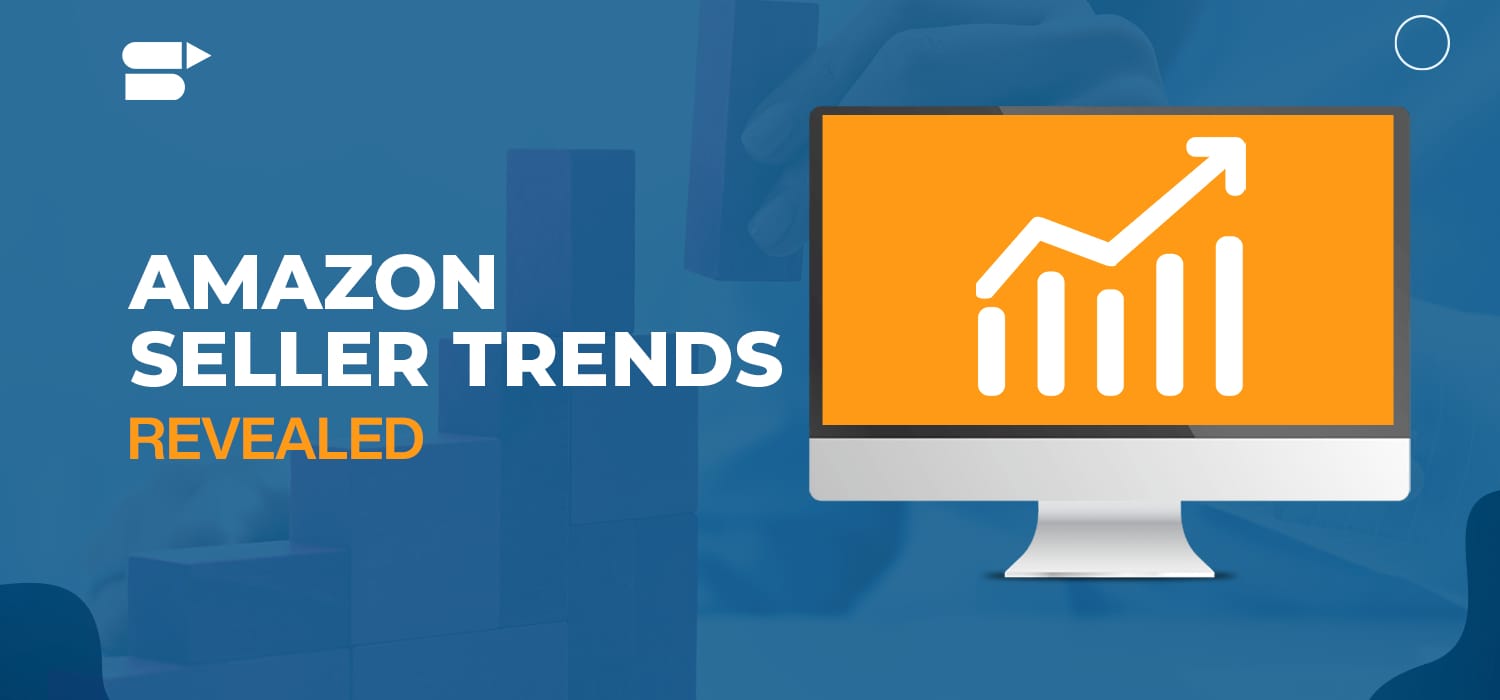Unveiling Amazon Best Seller Trends with Expert Strategies for Profitable Selling

Trying to figure out the best products to sell on Amazon is the hard part. With more than 400 million products out there on Amazon, it can be difficult to sort out the best niches that work on Amazon. A new seller or an experienced seller might have experienced this situation at least once.
SellerApp’s Product Trends algorithm identified a huge shift in the sales for four categories, in the last quarter. 5 products out of these 4 categories established high sales volume due to a shift in the consumer purchase behavior in Q1 and Q2. With an increasing population of consumers, shifting their purchases online, the demand for these products is rising substantially. Therefore, we at SellerApp have identified the trending products in Q1 and compiled an analysis of the best-selling categories. In this article, let’s take a look at these trends.
Few products are popular enough to generate high volume sales, but in the ever-changing e-commerce industry, timing and marketing are also extremely important for your success. Of course, COVID-19 upheavals would certainly define the eCommerce product trends in 2022. It doesn’t mean that COVID-19 would negatively affect product sales, but would change the niche and product trends in 2022.
No matter if you sell on Amazon, Shopify, or your website, it’s vital to decide the products you want to sell. Even if you are an experienced seller who is trying to expand your portfolio, you need to look at the seller trends along with the trending products online. And, with the pandemic influencing the future of e-commerce products’ trends, you need to be familiar with all the factors that come into the picture while deciding your next product to sell.
In this article, let’s take a look at the Amazon bestsellers trends along with the ways to find trending products that reap more profits during this part of the year.
Recommended Guide: Amazon best sellers(BSR).
Let’s start with learning a few facts and seller statistics about the Amazon marketplace.
Amazon Marketplace Statistics and Facts
- There are around 8.4 million sellers on Amazon with more than 1.8 million active sellers on the platform. According to Market pulse, there is an increase in the number of sellers by 17.7% in a year, with an estimated 343,000 new sellers.
- In early March, there is a huge surge in customer demand for household staples, and essential products including health and personal care, home office supplies, and groceries, etc.
- There is a decline in demand for wireless devices, apparel and accessories.
- Amazon advertising sales has increased by 39% during 2018-2019. As Amazon customizes features within Sponsored ads, more and more brands tend to experiment with Amazon’s advertising solutions.
- In the US alone, there are about 1.1. a million sellers actively selling on Amazon Marketplace, experiencing an additional 250,000 sellers who joined in this year.
- The UK, Japan, and Germany are the leading markets for Amazon after the US. (Check out this guide to know about selling on amazon UK.)
- India, Brazil, Mexico, Turkey, and Australia are the emerging markets for Amazon. Countries such as India, Brazil, and Mexico would have the largest contribution to Amazon international sales in the upcoming years.
- Around 29% of the top Amazon sellers in the US, Germany, UK, and Japan are based in China (Market pulse). There is a decline in the share of Chinese sellers from January to March from around 35% to 29%. Furthermore, more than half of the new seller registrations were from China during March-April 2020.
- As Amazon started prioritizing essential products, there was a paradigm shift from FBA to FBM among the sellers, and FBA sales were not as high as before.
Is it still profitable to sell on Amazon?
First, do you still think it is profitable to sell on Amazon? – This is the common question for most of the sellers starting on Amazon.
Our answer would be yes if you have a solid foundation in Product Research on Amazon, PPC management, and Listing Optimization. These three are the core pillars for your product marketing on Amazon. Along with these, your inventory and fulfillment need to be planned well.
And, our second reason for saying that Amazon is still profitable in 2023 is because of its vast customer base and growing popularity among brands owing to its advanced advertising solutions offered.
If you are a self-starter or an entrepreneur who wants to delegate the services and tasks, selling your brand is more profitable based on the niche you choose.
Amazon Best Selling Products in 2023
As we all know, product search trends have been affected by the pandemic lately. There is a huge surge in the COVID-19 related product searches. Along with hand sanitizers and masks, grocery items’ sales are soaring across all the e-commerce platforms.
Let’s take a look at the trending categories on Amazon in 2023.
- Healthcare and medical supplies
- Shelf-stable goods
- Groceries
- Food and beverages
Out of these categories, the below products have seen the fastest growth in 2023.
- Disposable gloves
- Bread machines
- Soups
- Dried Grains and Rice
- Could and cold medicines (OTT medicines)
While travel and apparel-related items such as luggage bags, men’s wear, etc., have seen a sharp decline recently.
As we all know, Amazon is a price-driven marketplace. Besides, customers have the tendency to compare multiple stores mostly online and some offline to grab the product at a cheaper price. So, you need to keep your prices and pricing strategies ahead of the game to get the most sales, or else you will be stuck with the inventory forever.
Finding the right products on Amazon in 2023 isn’t as easy as you think! (neither hard)
Related Post: Websites for Amazon sellers to Find Private Label Product Ideas
Tips to Find Profitable Niche
Whether you have your online store or thinking to start one, monitoring the industry trends and purchase interests of potential customers is important.
Most of the time, sellers focus on the products and how their products fit the needs of the customers. But, let’s see differently, how valuable is your product and how well it sells?
Well, you also need to decide if you want to sell seasonal products or the products which have demand year-round and hopefully in the coming years too.
So, below are a few of the hacks that would be helpful for you to keep an eye on to decide your niche.
High-profit making products:
- Light, fast, and easy to ship
- Have a high-profit margin
- Have huge brand potential
- High-good customer satisfaction rate
- Low return rate
- Sell fast (always in demand)
Low-profit making items:
- Cheap and low-quality products
- Low-profits
- Narrow niche
- Patented or trademarked goods
- Huge competition (you can identify the products with high competition by looking at their reviews, or you can use SellerApp Chrome extension or Amazon sales estimator to find out the products with high competition)
- Heavy items, slow shipping
Characteristics of a good product
Demand – You need to pick the products that have constant demand throughout the year.
Price Profitability – You need to have a robust pricing strategy. After covering the fixed and variable costs of the product, your product prices should be profitable. And, the customers should find enough value to purchase the product.
Non-perishable, easy to store – Quality control and manufacturing challenges can be quite daunting. Choose items that are easy to store and fulfill.
Opportunity to grow – Pick products that have more growth potential by looking at your competitors’ products or your product reviews, you can improve the quality of your product.
For those who are already familiar with selling on Amazon and have a set of products, selling a similar or complementary product can reap more profits.
Find out what kinds of products your customers like?
A product that is sold well doesn’t always mean that your customers like it. You need to understand the data, observe the previous product trends and learn what interests them.
If you are someone who finds it hard to get some profitable product ideas, we are glad to help!
The following ideas would be more valuable if you already have a website or actively use social media.
Google Analytics
As we said, if you have an existing e-commerce website, you can take advantage of Google Analytics and track your audience activity on your website. If you did not use it yet, start doing it now. You’ll have potential information about your customers. Learn more about customer age, demographics, gender, interests overview with the help of Google Analytics.
For those of you who don’t have a website, you can use Google Trends for Market research. Go to Google Trends, select your location, filter with your industry, and start searching for product ideas by giving a few keywords. For instance, if you sell women’s clothing, try researching with ‘women’s shoes,’ or ‘women’s fashion,’ etc.
Identify how your customers perceive your competitors
For example, if you are someone who sells electronic items such as Television, search with keywords like Sony TV, or Samsung TV. You’ll be able to see the customer search trends in the data and understand customer preferences.
Facebook Insights
If you are a seller with a strong social media presence, then you would have access to a vast range of demographic information about your audience which includes their product interests, purchase patterns, or where they live, etc.
How to find this Insights section?
If you have a business page, you can see the Insights tab at the top of the page. Click on the Insights tab, and select ‘People,’ and you can see the demographic details of your audience.
Also, from the Insights tab, if you click on the Posts, you can find the details about your customer engagement. This section gives you insights into customer interests and engagement based on your posts. Though the data might be limited, you can identify the type of products that your customers are likely to purchase based on the customer interaction with a post.
In addition to all these tools, you can use Shopify, eBay, or Pinterest to gather unique insights into product ideas. You can also check out this blog where you can find a list of private label websites for your product research and market research.
If you want to learn more about product research on Amazon, check this link here.
It’s Time to Sell
So, that’s all about product and category trends on Amazon, and hope you got some insights into how to start your product research in 2023. Finding the right product that fits your business is one thing and finding the right way to market your product is the second crucial step. If you want to get some actionable information about advertising during the pandemic, watch our video on Amazon advertising during uncertain times.
Related blogs from the SellerApp
Shipping From China To Amazon FBA
Import From China To Australia
Amazon Marketing Services – AMS Guide
How to Set Up EDI with Amazon Vendor Central
10 DTC Trends For Ecommerce Growth
What is the Amazon DTC master plan?











Diana Joseph
June 6, 2024Thanks for sharing this! Your posts are always so informative.
Clare Thomas
June 28, 2024Thank you for reading.
Stephen
June 12, 2024Thanks for the information! This was very useful.
Clare Thomas
June 28, 2024Very happy to hear that.
Thank you.
Kenneth George
June 24, 2024How often do these trends change? Should I keep monitoring them regularly?
Clare Thomas
June 28, 2024Trends can change quickly, so regular monitoring is essential. We recommend using tools like SellerApp’s Product Trends to stay updated on the latest shifts in the market